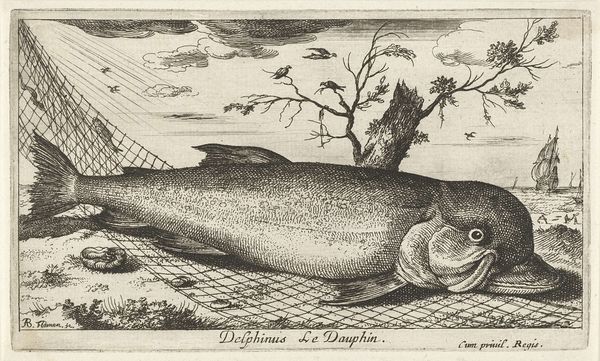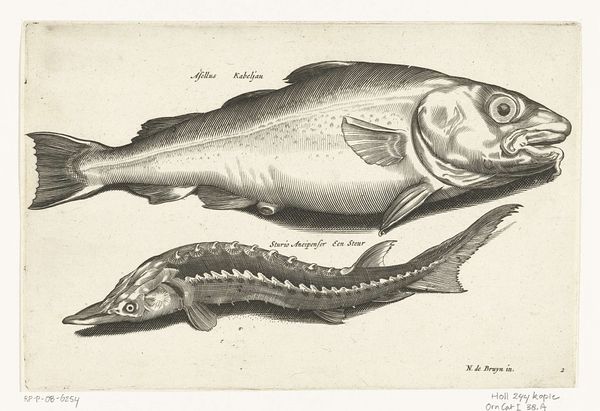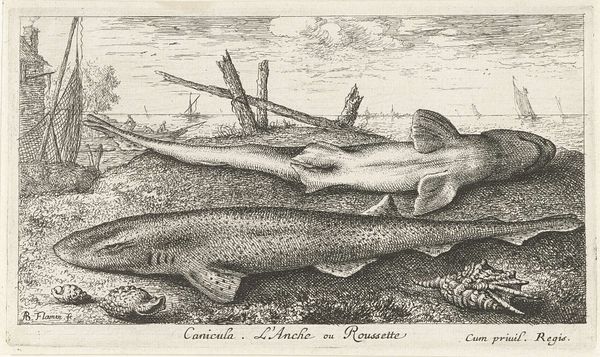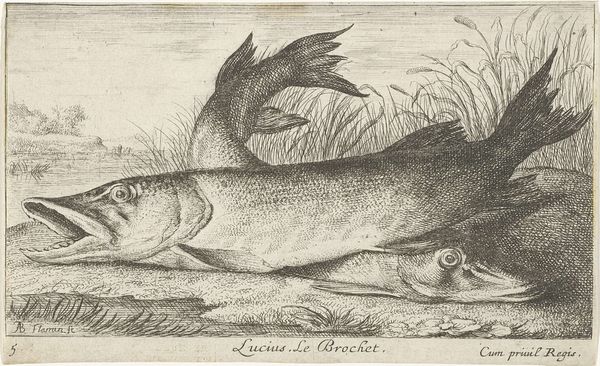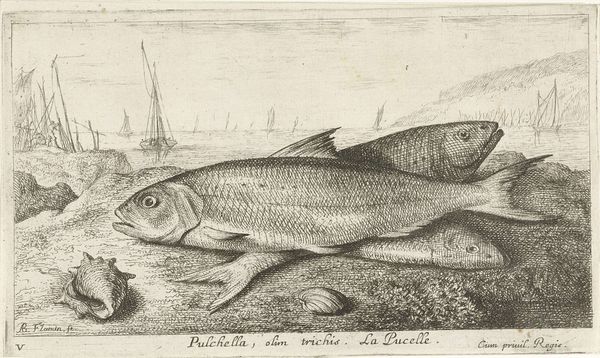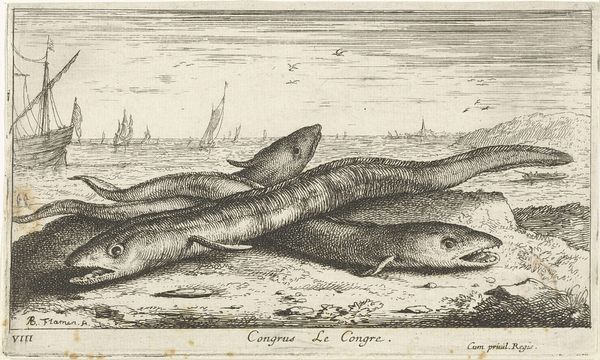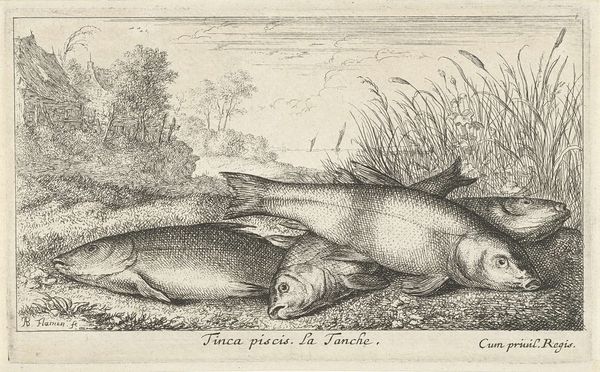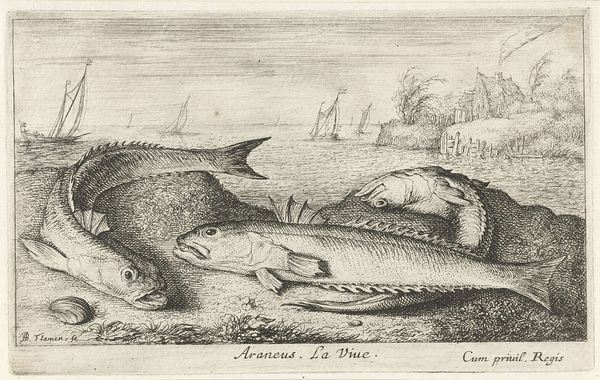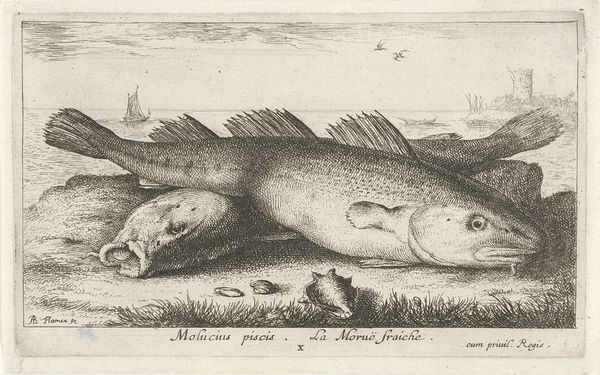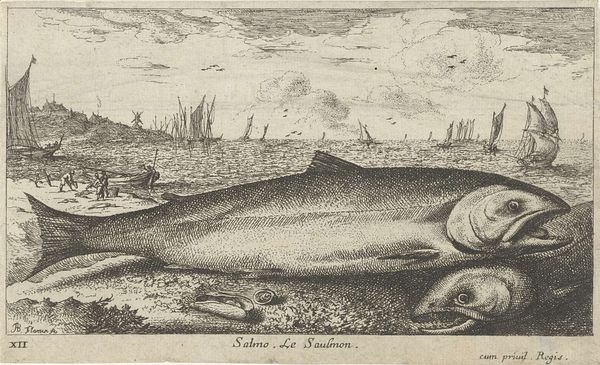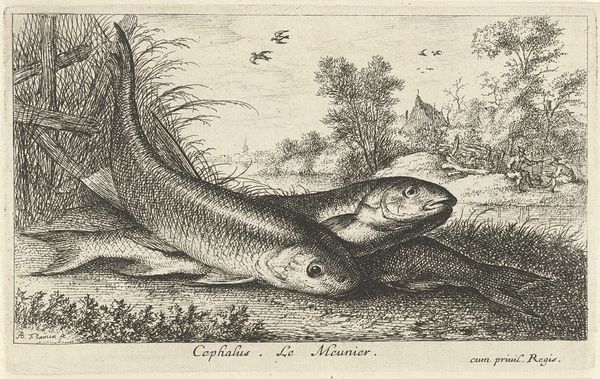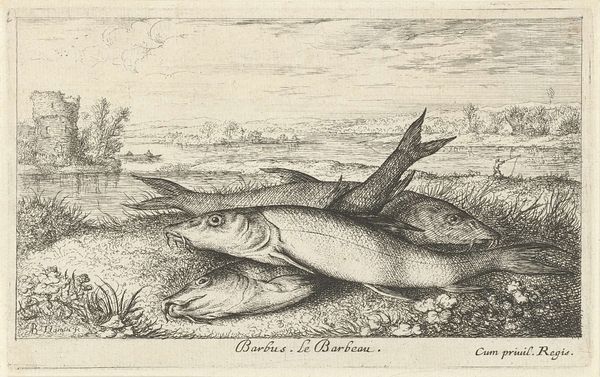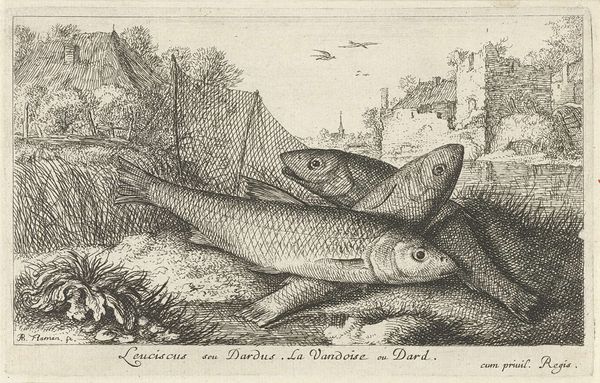
#
light pencil work
#
quirky sketch
#
pen sketch
#
pencil sketch
#
old engraving style
#
personal sketchbook
#
sketchwork
#
pen-ink sketch
#
sketchbook drawing
#
sketchbook art
Dimensions: height 103 mm, width 178 mm
Copyright: Rijks Museum: Open Domain
Curator: This is Albert Flamen’s etching, "Two Trouts on a Riverbank", dating back to 1664. The rendering of these fish evokes an immediate impression of death. Editor: The stiffness of their forms, the almost vacant eyes – you’re right. But beyond that, it's the precision of the engraving that strikes me first. Look at the detail in the scales, the careful hatching that defines their contours. Curator: Absolutely. The linear precision here speaks volumes. Consider how the parallel lines create a sense of volume and texture, almost mimicking the play of light on the fish’s skin. It's a demonstration of masterful control, transforming simple lines into a surprisingly tactile image. Editor: I am interested, though, in what these fish might signify within a broader 17th-century context. Fisheries were a crucial economic resource at the time. Does the depiction of dead trout represent an exploitation, a commentary on the impact of early commercial fishing? Or are they signifiers of purity from nature? Curator: Those questions take us down an interesting, yet possibly unverifiable, road. Focusing on the composition alone, note how the artist contrasts the still life of the fish in the foreground with a more active, landscape background where we see figures on a lake or river. Editor: It is true. Foregrounding the lifeless fish against an otherwise vibrant backdrop amplifies your idea from earlier, which gives the piece a layer of morbidity or quiet critique of its time, reminding us that progress often has hidden costs. Curator: The technical artistry invites such social and cultural inferences. We can see in this artwork how line, texture and composition offer access to rich and dynamic conversations. Editor: Precisely. And hopefully, our discussion illustrates how an exploration of historical context amplifies our understanding of even seemingly straightforward subjects.
Comments
No comments
Be the first to comment and join the conversation on the ultimate creative platform.

